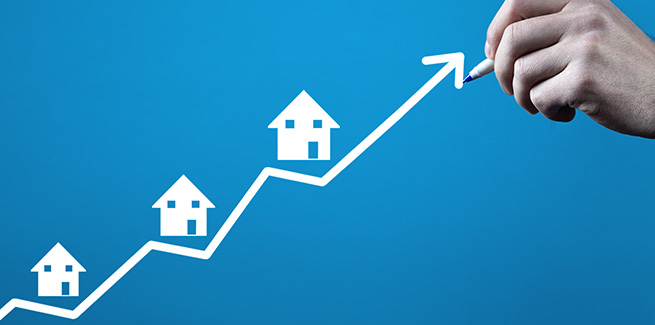National Australia Bank (NAB) has released its Residential Property Survey for the second quarter of 2021 (Q2 2021), in which it has revised up its outlook for dwelling prices in 2021 to 18.5 per cent.
The major bank said that its forecast was driven by faster-than-expected outcomes in recent months, which have seen a higher starting base. It added that while it expects a slowing in the monthly pace of growth from here, property prices would continue to post strong growth over the next six months.
However, alongside the near-term upgrade, NAB has pulled back the price growth in 2022 and expects dwelling prices to rise by a more subdued 3.6 per cent as “affordability constraints begin to bind” over the year and result in a slowing in price growth as the impact of lower growth fades.
Across the capital cities, NAB has forecast a 21.6 per cent rise in dwelling prices in Sydney in 2021, followed by a 3.1 per cent rise in 2022.
It has forecast a 23.5 per cent rise in 2021 and a 4.3 per cent rise in 2022 in Hobart, a 17.6 per cent rise in 2021 and a 3.5 per cent rise in 2022 in Melbourne, a 19.5 per cent rise in 2021 and a 4.4 per cent rise in 2022 in Brisbane, a 17.4 per cent rise in 2021 and 3.9 per cent rise in 2022 in Adelaide, and an 11.6 per cent rise in 2021 and 3.9 per cent rise in 2022 in Perth.
NAB said that it still expects house prices to lift at a faster rate than unit prices, which have been more impacted in major cities by slowing population growth due to international border closures amid the coronavirus pandemic.
Along with providing its property price growth forecasts, the NAB survey of 370 property professionals, including real estate agents/managers, property developers, asset/fund managers, and owners/investors also found that respondents expect national house prices to rise by a more moderate 4.2 per cent over the next 12 months (previously 5.1 per cent) and 3.5 per cent in two years’ time (previously 4.9 per cent).
NAB expects interest rates to remain on hold until early 2024 similar to the Reserve Bank of Australia (RBA), along with a further $100 billion of quantitative easing, it said.
It added that both the RBA and NAB do not expect economic outcomes such as full employment and sustainable inflation at target to be reached until 2024, although the risks are now more balanced than they were previously.
However, NAB noted that the better-than-expected economic recovery to date means that the RBA cannot “credibly” commit to unchanged interest rates for the next three years on rolling basis but would prefer a shift to conditional forward guidance.
Support measures only helping FHB ‘moderately’
Along with property price growth forecasts, the NAB survey of 370 property professionals, including real estate agents/managers, property developers, asset/fund managers, and owners/investors, revealed that government incentives – such as the federal government’s First Home Loan Deposit Scheme, the HomeBuilder scheme, and various state-based government support measures – are playing only a “moderately” significant role in helping first home buyers (FHB) get into the market earlier.
On average, property professionals rated the extent they were helping 6.6 points out of 10 (where 10 indicates that the measures are significantly helping FHBs enter the market earlier).
The measures have had the most significant impact in Victoria (7.1 points) and the least impact in Tasmania (5.8 points), the survey revealed.
Rising house prices are having a more significant impact on FHB activity, with property professionals scoring 7.7 points out of 10. Unsurprisingly, the impact was the most significant in NSW (8.3 points), and the ACT (8.2 points), where median prices are the highest in the nation and house prices are growing rapidly.
The impact has been least felt in the Northern Territory (5.8 points) where median house prices are also the lowest in the country.
Additionally, 54 per cent of FHBs are more willing to build or buy new builds now compared to two years ago.
FHBs have remained the most active participants in new housing markets, with market share of sales to FHB owner-occupiers totalling 35.5 per cent in Q2. However, this was down from 39.2 per cent in Q1, while the share of FHB investors rose to 12.3 per cent (10.4 per cent in Q1).
Overall, total FHBs accounted for 47.8 per cent of all new property market sales during the quarter, down from 46.9 per cent in Q1 2020, and at its lowest level since Q2 2020 (but still above survey average levels of 37.8 per cent).
Index level hits survey high
The NAB residential property index rose to a survey high of 71 points in Q2 2021 amid continued strong property price growth across Australia and further gains in rents.
This was led by Darwin (100 points) followed by Western Australia (86 points), Queensland (80 points), and Tasmania (75 points).
However, the index was lower across the other states, with NSW at 69 points, South Australia at 63 points, Victoria at 58 points (up 19 points but below the national average), and the ACT at 50 points.
Confidence levels among property professionals remained elevated at 73 points for the 12-month measure and 64 points for the 24-month measure amid better-than-expected economic recovery, a strong labour market, and low-interest rates.
However, both measures eased slightly from survey high levels reported in the previous survey of 75 points and 69 points respectively.
[Related: Aus house prices to swell by 16%: Fitch]

